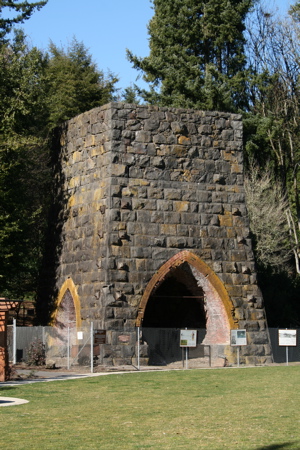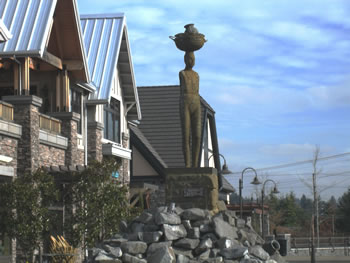
Most of us are aware that being “Green” is becoming more and more of a focus in nearly all areas of our life including: organic foods, local products (to avoid fuel for transportation), eco-conscious goods of all kinds, earth-friendly energy solutions, bio fuels, energy-efficiency, recycling, the paperless movement and on & on. The world of real estate is not exempt from this burgeoning awareness of all things green, and the demand for green buildings is creating a new language as well.
From “Carbon Footprint” to “Green-Washing”, you’d better come up to speed or you may be left wondering what in the world people are talking about around the water cooler, or at your next cocktail party. (Smile… pretend… maybe it will come to you!) Fortunately the city of Portland’s Office of Sustainable Development http://www.portlandonline.com/osd/ has come to the rescue with a glossary of terms to help even the most confused among us. Here are a few terms from this glossary that you may find useful to know:
Adaptive Reuse- Rehabilitation of a building or site for new uses.
Biodegradable- Capable of decomposing under natural conditions.
Brownfield- Abandoned, idled, or under-used industrial and commercial facility/site where expansion or redevelopment is complicated by environmental contamination.
Carbon Footprint- A measure of the impact human activities have on the environment in terms of the amount of greenhouse gases produced, measured in units of carbon dioxide.
Daylighting- The use of controlled natural lighting methods indoors through skylights, windows, and reflected light.
E-Waste- Waste materials generated from using or discarding electronic devices, such as computers, televisions, and mobile phones. E-waste tends to be highly toxic to humans, plants and animals, and has been known to contaminate water, air and dirt.
Graywater- Water that has been used for showering, clothes-washing, and faucet uses. Kitchen sink and toilet water is excluded. This water can be reused in subsurface irrigation for yards.
Green Building- An integrated framework of design, construction, and operational practices that encompasses the environmental, economic, and social impacts of the buildings.
Green Design- A design, usually architectural, conforming to environmentally sound principles of building, material and energy use. A green building might make use of solar panels, skylights and recycled building materials.
Green Development- A development approach that goes beyond conventional development practices by integrating environmental responsiveness, resource efficiency and efficient building operations.
Green Wash- To falsely claim a product is environmentally sound. Also known as “faux green”. Disinformation disseminated by an organization so as to present an environmentally responsible public image.
LEED (Leadership in Energy and Environmental Design)- Certification program created by the U.S. Green Building Council that sets standards for efficient and sustainable design.
Mixed-Use Development- A development in one or several buildings that combines several revenue-producing uses that are integrated into a comprehensive plan such as a project with elements of housing, retail and office space.
Negawatt- The saving of a megawatt of power by reducing consumption or increasing efficiency.
Pervious Paving- Paving material that allows water to penetrate to the soil below thus reducing the amount of water that needs to be treated by the water system, and increases the water in the aquifer.
Solar Access- Access to the sun’s rays by, for instance, restricting the location of shade trees or laying out of the building so as to maximize the usefulness of solar energy.
Triple Bottom Line- A business and development philosophy incorporating the three E’s: equity, environment, economics. Also referred to as the three P’s: people, planet, profit.
Waste Heat Recovery- The reclaiming of waste heat in a building to preheat cold water or air before it is fed into a water heater or heating system.
Xeriscape (registered)- Creative landscaping design for conserving water that uses drought-resistant or drought-tolerant plants. A registered trademark of Denver Water.

 The Clackamas Indians originally inhabited the area now known as Lake Oswego. The Indians called the lake Waluga, meaning wild swan.
The Clackamas Indians originally inhabited the area now known as Lake Oswego. The Indians called the lake Waluga, meaning wild swan. It will also provide you with history of the area and insights into Lake Oswego’s vibrant community. You will find plenty of statistics and details about houses currently for sale and recently sold. You will also find neighborhood profiles and featured homes. And, yes, you’ll get commentary on local events and neighborhood happenings.
It will also provide you with history of the area and insights into Lake Oswego’s vibrant community. You will find plenty of statistics and details about houses currently for sale and recently sold. You will also find neighborhood profiles and featured homes. And, yes, you’ll get commentary on local events and neighborhood happenings.